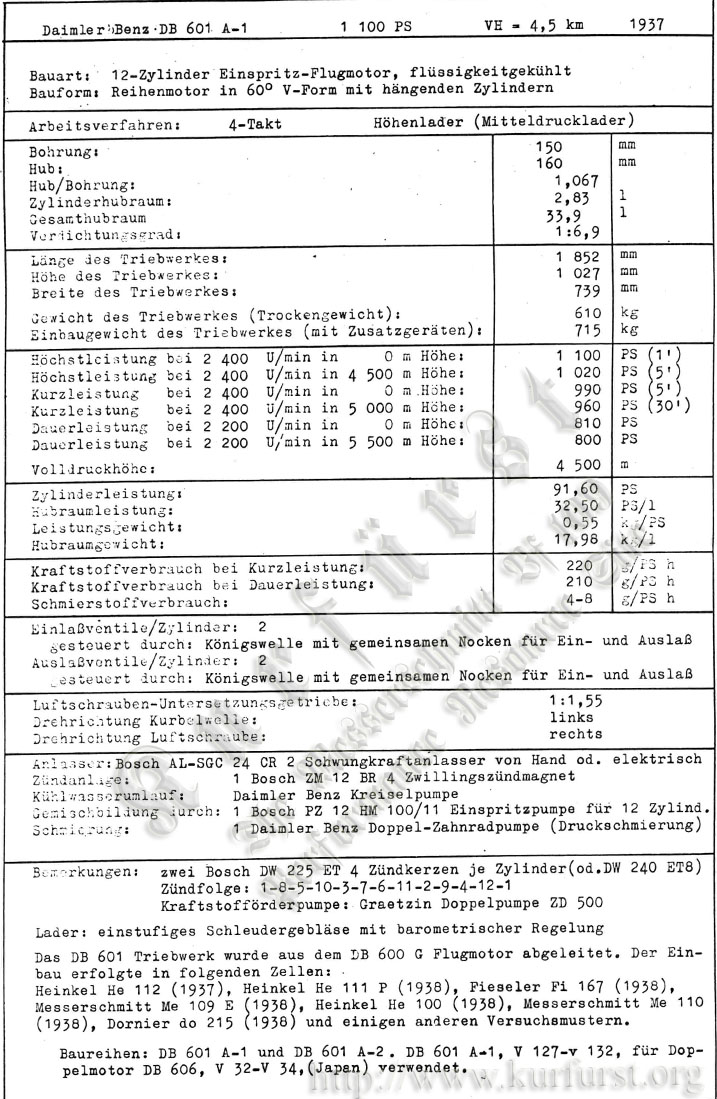
 |
|
#31
|
||||
|
||||
|
Quote:
As it is labeled, it is what the manufacturer guaranteed and what was accepted by the customer. Quote:
A newly manufactured aircraft is one of the most dangerous things in aviation. It is unproven. A very thorough inspection is completed before the first test flight. The manufacturer will put the aircraft thru a test flight period to ensure it reaches its numbers before turning it over to the customer who again goes thru their own prescribed regiment of test/inspections before accepting it. When an airframe reaches the end of the assembly line, it was not uncommon for it to remain there for a month or so as it was tweaked and refined before being accepted. Quote:
Last edited by Crumpp; 10-26-2011 at 11:24 AM. |
|
#32
|
||||
|
||||
|
Quote:
I really don't think development was static in Germany for 18 months before the Battle the Britain. Otherwise we would have to believe that Germany exported more powerful engines than they used in their own aircraft. That does not make any sense and would be a first in the history of the world. We don't know the exact conditions, perhaps it is the performance with the automatik propeller? |
|
#33
|
|||
|
|||
|
Auszüge aus Flugzeugdatenblatt (aircraft data sheet) Bf 109 E-1, E-3 nach L.Dv.556/3 @ http://www.rolfwolf.de/daten/E4/Emil.html
Motorleistungen DB601A Kurzleistung (1 min) 1100PS bei 2400 U/min 1.4 ata Startleistung 990PS bei 2400 U/min 1.30 ata Steig/Kampflleistung 910PS bei 2300 U/min 1.23 ata Volldruckhöhe 4000m How do the speeds match for: Höchstgeschwindigkeiten in Steig/Kampfleistung 0km - 460km/h 1km - 480km/h 2km - 500km/h 3km - 520km/h 4km - 540km/h 5km - 555km/h 6km - 555km/h 7km - 550km/h If the Höchstzulässige Horizontal-Bodengeschwindigkeit (Maximum horizontal ground velocity) is 485km/h, how can the max speed at 0km be 500kph? |
|
#34
|
||||
|
||||
|
500 km/h could be probably reached with DB601Aa motor which had 1175PS power output at sea level at 1.45 Ata 2500 RPM.
These is 75 PS more then with 601A ( 1100 PS). Also these data above is probably for old supercharger (4.0 km FTH). There are data where 109 E-3 reached - 467 km/h at deck - so a few km/h more, so probably also maximum speed ( at 1.4 Ata) would be little higher then 485 km/h - about 490 km/h. It could be difference in radiator position.  These is power output with newer supercharger which rised maximum speed at FTH - with old there was 555 km/h with new one it was 570 km/h.  
Last edited by Kwiatek; 10-26-2011 at 01:09 PM. |
|
#35
|
||||
|
||||
|
Quote:
Again - 500 +- 5% means they tried to achieve 500 but it was more likely that most of the time, they made it closer to the -5% in so called real life. I am not saying that they were failing to stay within margins. Quote:
Quote:
|
|
#36
|
||||
|
||||
|
Quote:
Quote:
We know for a fact, C3 fuel was in use during the Battle of Britian..... Automatik propellers (CSP) also were used during the Battle of Britian that were not in use in February 1939 as the the other data is dated. Pick your poison.... Quote:
|
|
#37
|
||||
|
||||
|
Quote:
For the discussion, what is your aviation experience and background. Not that your opinion is not valid, just so we all know where it is coming from. |
|
#38
|
||||
|
||||
|
C3 fuel was used only in Db601N engines not in DB601.
Also automatic prop pitch for 109 E didn't change its maximum speeds. So i think all difference at sea level speed is in radiator settings and type of engine - Db601 A or DB601 Aa which had more power at the lower alts then 601A and surly difference in tested planes. |
|
#39
|
|||
|
|||
|
You all realize that the French test obtained about 494 kph at 600m altitude and in extrapolating to 0m something around 480 kph? At rpm = 2400.
The pression d'admission about 1000 (unit I cannot read). My guess is that they speak here of ATA pressure. Just not sure what kind of unit they used as I cannot decypher the scale label. Last edited by 41Sqn_Stormcrow; 10-26-2011 at 01:21 PM. |
|
#40
|
||||
|
||||
|
Here is French 109 test raport :
http://kurfurst.org/Performance_test...formanceT.html We got from French test : With radiator open 2.5 km - 490 km/h - 2400 RPM - 960 mm. ( 1.3 Ata) 5.0 km - 520 km/h - 2400 RPM - 870 mm. With radiator close: 5.0 km - 570 km/h - 2400 RPM - 880 mm. There is 50 km/h difference between radiator open and close at 5 km alt. In chart there is about 475-480 km/h at 2400 RPM at 1000 mmHg which mean that test was done at ab. 1.35 Ata - probably radiator somewhere in the middle position (looking at 5 km maxiumum speed - 550 km/h) so with higher ATA then in previous data ( 1.3 Ata - 460-467 km/h). So it confirmed previous data for E-3 1.3 Ata 0- 460-467 km/h - depend of radiator settngs, and sort of plane 1.4 Ata (Db601A) - about 485-490 km/h 1.45 Ata (Db601Aa) - 500 km/h. 109 E-4 would be little slowier then E-3 beacuse of more draggy windscreen - it could be about 5 km/h slowier ( the same E-3 with new windscreen) Last edited by Kwiatek; 10-26-2011 at 02:13 PM. |
 |
| Thread Tools | |
| Display Modes | |
|
|